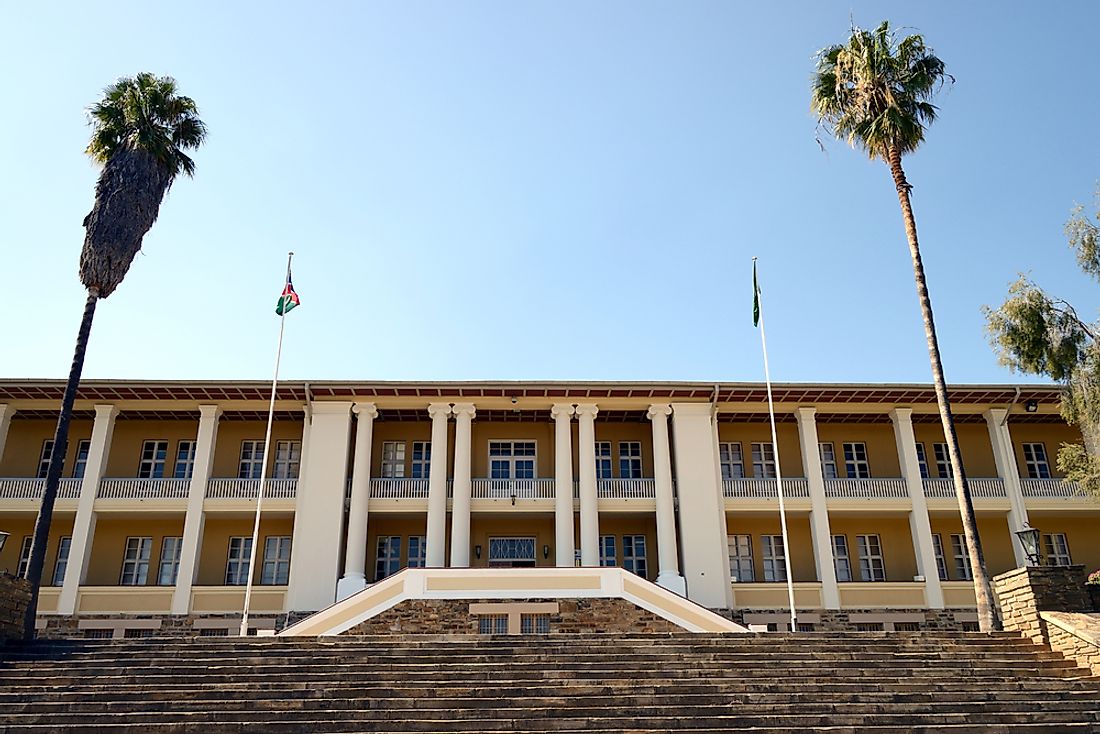What Type Of Government Does Namibia Have?

Namibia is a country on the west coast of southern Africa. Namibia gained independence from South Africa in March 1990. Namibia is a parliamentary democracy with a multiparty system employed since its independence. The president, who is elected for a five year term, is the head of state and the head of government. There are many political parties registered in Namibia. However, a single party South West Africa People's Organization (SWAPO) has won every election since Independence. The government of Namibia has three branches: the executive, legislative, and judicial branches.
Executive Branch
There are a total of five executive offices and twenty ministries. The offices are the Office of the President (OoP), Office of the Vice President (OoVP), Office of the Prime Minister (OPM), Office of the Auditor-General (OAG) and the Office of the Ombudsman. The cabinet is headed by the prime minister and comprises of twenty ministers and their deputies. There are also three agencies of the central government namely the Anti-Corruption Commission (ACC), the Electoral Commission (EC) and the Central Intelligence Service (NCIS) which complete the executive branch of the government.
Legislative Branch
Namibia has a bicameral parliamentary structure which means there are two houses of parliament. The lower house is known as the National Assembly and the upper house is known as the National Council. Together, the two houses make up the legislative branch of the Namibian government. The legislative branch is responsible for making and amending laws governing the country.
The National Assembly of Namibia comprises of 104 members. 96 members are elected through elections conducted by the Electoral Commission and the other 8 are appointed by the president. All serve five-year terms.
The National Council of Namibia comprises of 42 members. There are a total of 14 regional councils in Namibia and each selects three members of the regional council to serve on the National Council. They can be elected or appointed for a period of 6 years.
The legislative branch has been dominated by SWAPO since independence with 87 seats out of 104 in the National Assembly and 40 seats out of 42 in the National Council.
Judicial Branch
Namibia has a three tier courts system starting from the Lower Courts followed by the High Court. The Supreme Court is the highest court of law in the country. The courts operate completely independent of the executive and legislative branches of the government with their primary goal to uphold the law of Namibia. The judiciary is responsible for the interpretation of laws as well as decisions pertaining to the behavior of the state and government officials.
Other branches and Involvement
The military and armed forces also come under the government. The Namibian Defense Force (NDF) comprises of five battalions. The state is responsible for national organizations like Air Namibia, NamPost and the Transnamib (railways).
The constitution of Namibia is the supreme law of the country. The constitution has provisions for amending it but requires a clear two-thirds majority in both houses.











